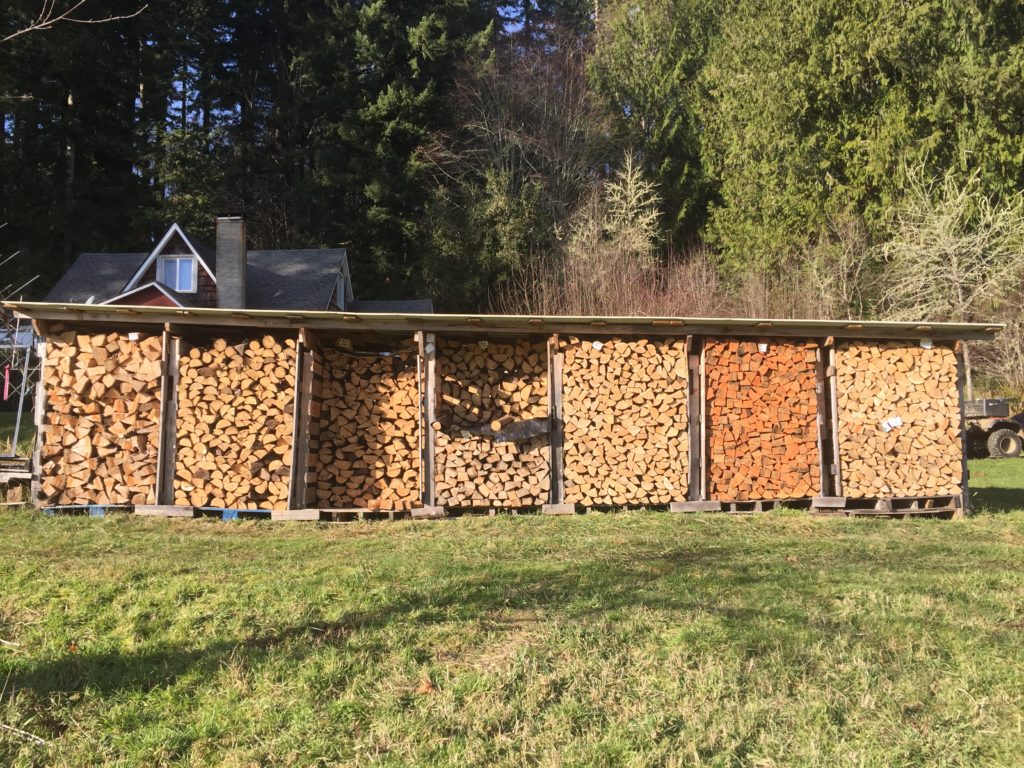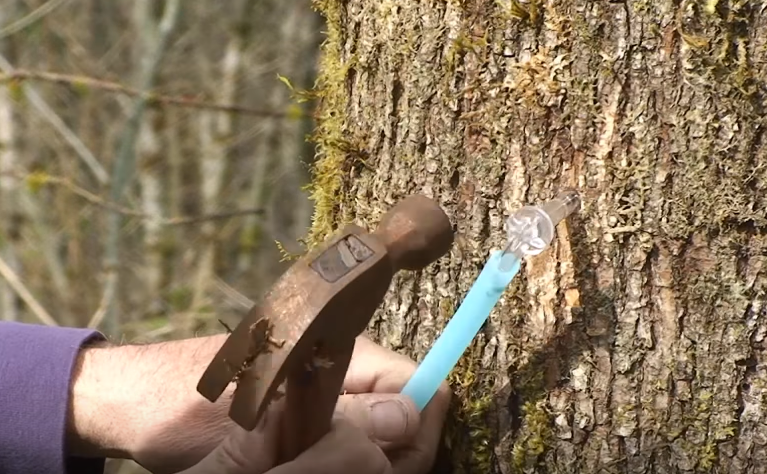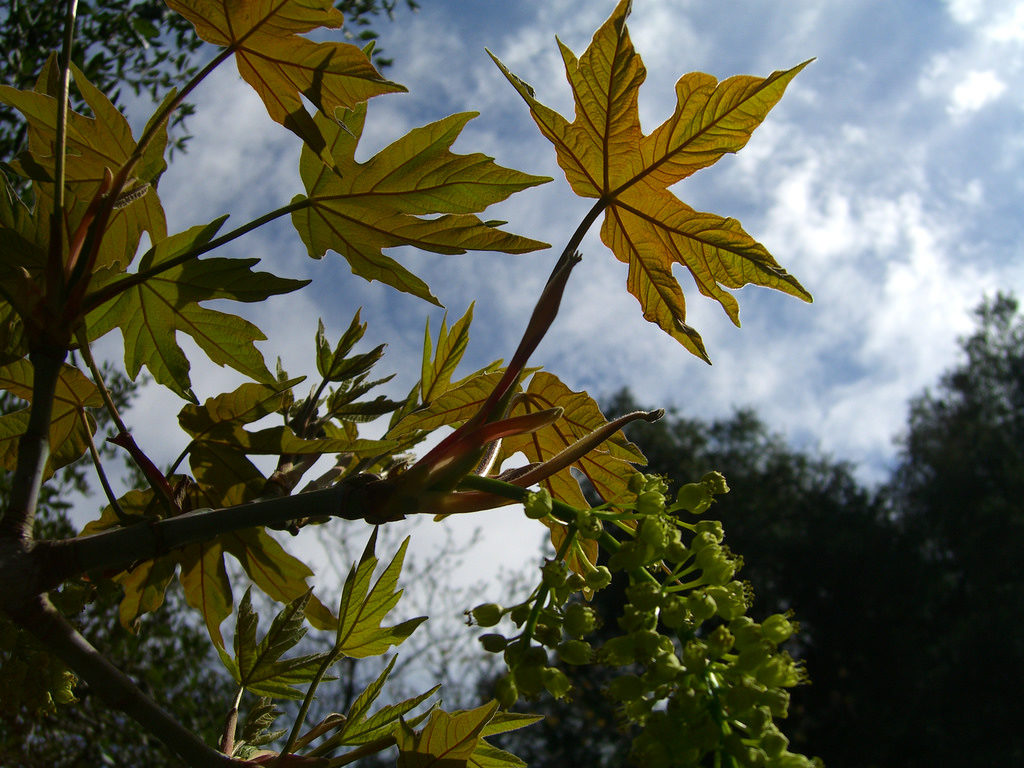NNRG Members Are Harvesting More Than Timber From Their Forests

Finding creative ways to derive enjoyment—and a little extra income—from non-timber forest products.
Many forest owners enjoy the pleasures and profits that Non-Timber Forest Products (NTFPs) bring. Broadly speaking, NTFPs are forest products or services aside from commercially harvested timber that have potential personal or commercial value.
NTFPs range from foraged berries and mushrooms to holiday wreaths and essential oils, from firewood to agricultural soil amendments, and on and on. Sometimes commercial services like tourism are considered NTFPs.
Two members of NNRG’s FSC® Group Certificate are capitalizing on some of the NTFPs in their forests. We hope their experiences inspire some curiosity in other landowners about the NTFPs in their forests.
Cedar Row Farm: Bundled Firewood

Lynn Baker and her partner Eve Lonnquist are members of the Oregon Woodland Co-Op, a group of over 70 private family forestland owners in Oregon. They’ve been selling bundled firewood through the co-op since 2012.
Lynn and Eve, along with Eve’s brothers, steward Cedar Row Farm—a 160-acre forest nestled in the Nehalem River foothills. The forest was purchased by Eve’s grandmother in 1919. Now, the family is returning their stretch of the Nehalem floodplain back to shade-providing conifers as part of a Natural Resources Conservation Service project.
The firewood comes from Cedar Row Farm’s thinning projects and fallen trees from snow and wind storms. It’s turned into three types of firewood bundles: “Regular,” which is a mix of fir, alder, and hardwoods; “Kindling,” which is smaller pieces of cedar and fir; and “Premium,” which is a mix of hardwoods including oak, maple, and cherry.
Lynn handles all of the firewood orders. Right now, about 20 grocery and hardware stores are stocking their bundles. Their vendors include New Seasons, Green Zebra, Gaston Market, and some Ace Hardware stores.
8.5% of the wholesale price of the firewood goes to the co-op for management and marketing, and the rest is passed on to the farmer. The regular bundle retails for about $7.
“Our customers really like our firewood,” Lynn says. “If you look at our bundles next to other bundles, it’s really beautiful, high-quality product.” The quality of the wood isn’t the only attractant: the label on the bundle explains that Cedar Row Farm is certified through NNRG’s FSC© group certificate, which sets it apart from most firewood sold at grocery stores as being from a responsibly-managed forest. The label also includes the story of the farm, so buyers know exactly where the wood comes from, how it’s harvested, and who manages the forest.
These humble chords of wood represent a win-win-win situation: wood buyers feel good about the responsibly sourced and hyper-local wood warming their homes and camp fires, Eve & Lynn take home around $7000 a year in profit, and their stewardship of the forest balances the multiple goals of recreation, income from timber harvest, and wildlife habitat in their forest.

A full list of stores carrying Eve and Lynn’s firewood is available here. Eve & Lynn also sell chiminea firewood, available through Little Baja. Other products sold through Oregon Woodland Co-op include evergreen boughs, Canopy Essential Oils (created by another NNRG member, Jim Merzenich of Oak Basin Tree Farm), and Oregon Heartwood.
Chuljian Family Forest: Bigleaf Maple Syrup

David Chuljian began tapping bigleaf maples in 2014.
He’ll be the first one to tell you: bigleaf maple syrup isn’t really a commercially viable NTFP. Most of the (authentic) maple syrup available in grocery stores comes from sugar maples (Acer saccharum). True to their name, sugar maples have high concentrations of sugar in their sap. In contrast, bigleaf maples are less sweet. It takes around 50-75 gallons of bigleaf maple sap to produce one gallon of syrup (compared to 30-45 gallons of sugar maple sap to make one gallon of syrup).
But David isn’t interested in selling his syrup. It’s more of a hobby—and a tricky one at that. Figuring out which of his trees produce the most sap has taken years.
“Some trees produce…and some don’t,” he says, and after a while you start to figure out which are which. Tapping is done in the winter—but even the timing is a little mysterious. Usually David starts tapping in early December and wraps up in February. This season the window was much smaller: the sap flow didn’t start flowing heavily until just after the big snowfall. Since then David has harvested 100 gallons (compared to about 200 gallons last year). Now, it’s already too warm again for the trees to produce much.

Once collected, the sap is cooked down for a long time—David boils it on an outdoor stove overnight—until it’s been significantly reduced to a much thicker, more sugary substance. That substance is then filtered (methods vary) and voila! You’re left with homegrown bigleaf maple syrup.
David gives some of his sap away, boils some into syrup, and boils some even further down and lets it harden into candy. “They get added to packets of marketing materials for prospective wood buyers.”
How does it taste? “It’s more caramel-y than regular syrup,” says David, “And it varies…sometimes it’s weird.”
There are many resources available for those interested in learning more about the process of tapping bigleaf maples. Here are just a few:
- Pamphlet from OSU Extension Service – with brief instructions for tapping
- Article on the process from the WSU Extension Newsletter – by Al Craney, Skagit Conservation District, and Kevin Zobrist, WSU Extension
- Video showing the tapping process – by Al Craney & Kevin Zobrist

Leave a Reply